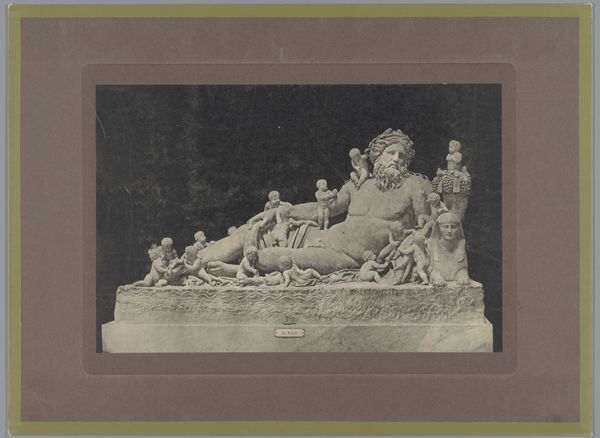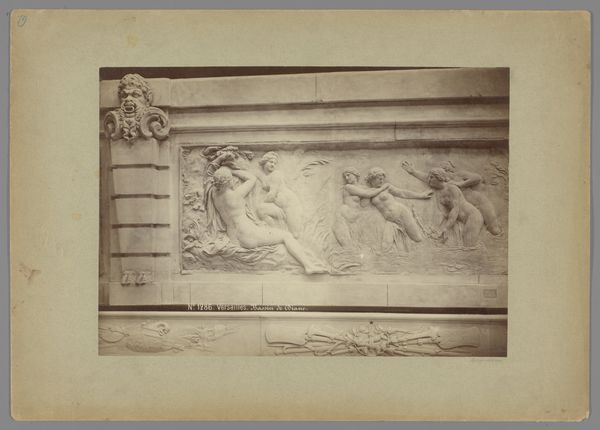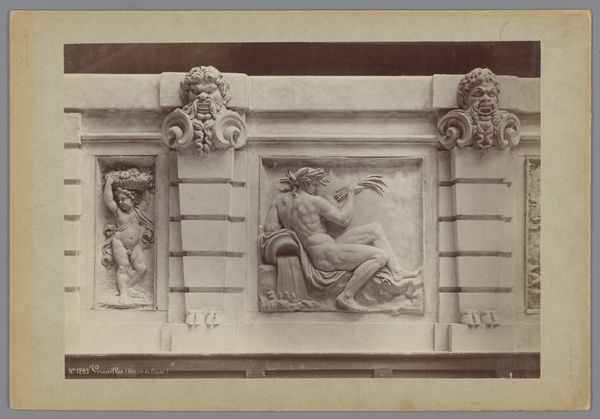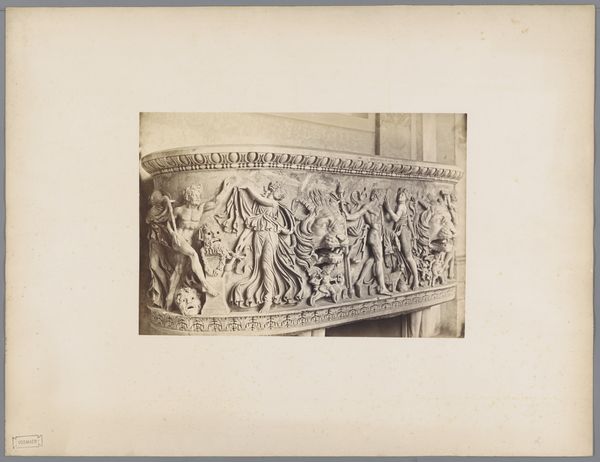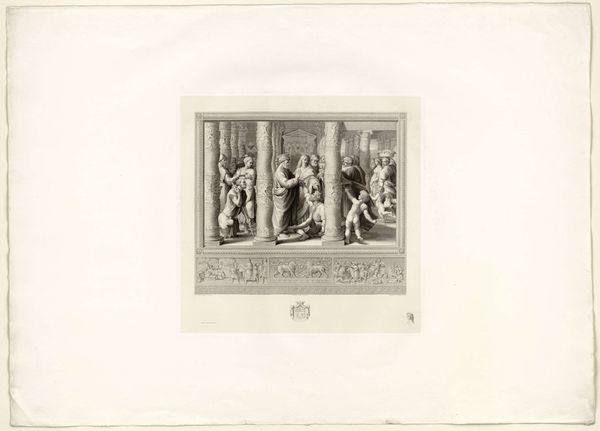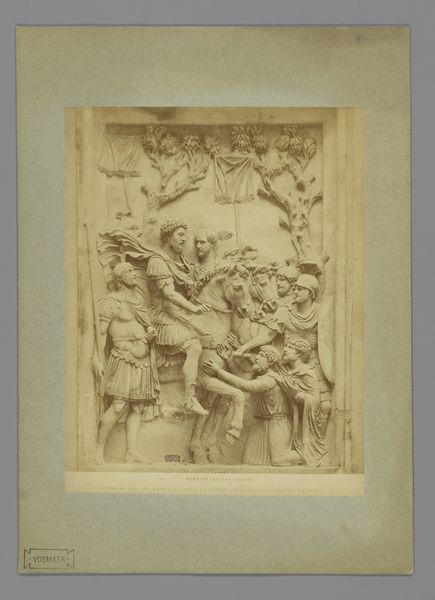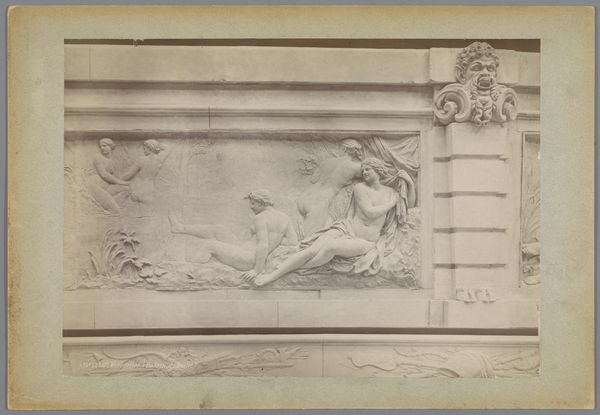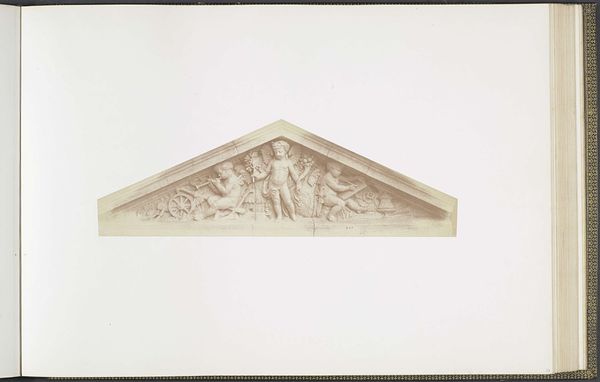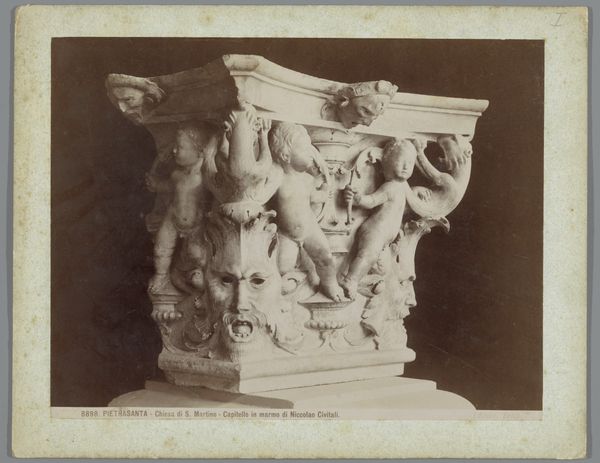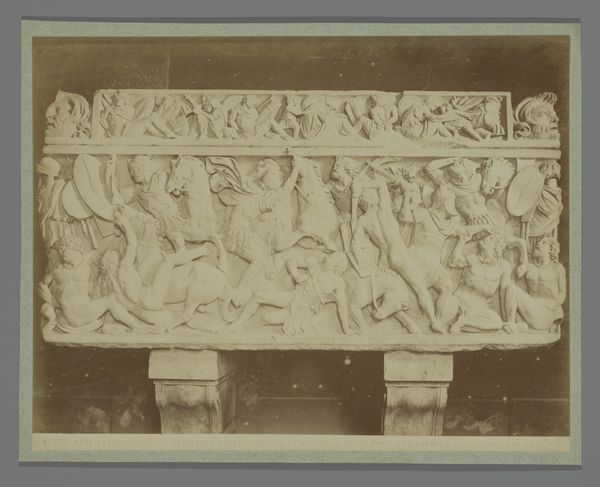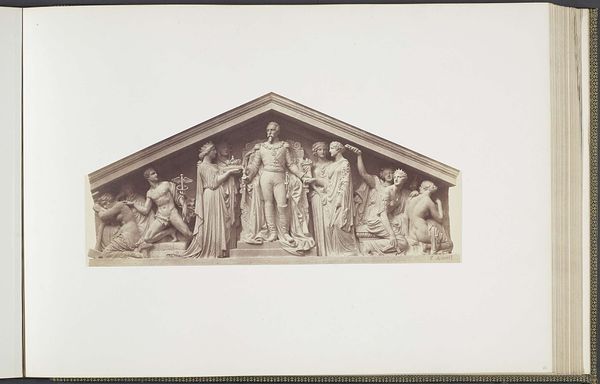
Dimensions: height 154 mm, width 256 mm
Copyright: Rijks Museum: Open Domain
Editor: So, this marble relief, "Reliëf, voorstellende de Moederliefde" – or "Relief, representing Motherly Love" – is attributed to J. Loroy, and it dates back to somewhere between 1875 and 1900. It feels very… staged, almost like a classical tableau. What strikes you about it? Curator: The overt idealization is precisely where its interest lies. Neoclassical depictions of motherhood were rarely about actual mothers' experiences. Instead, they functioned as ideological tools. Consider how "Motherly Love" is presented here: as an allegory of virtue and civic duty. Can we unpack how this portrayal might serve particular societal goals? Editor: You mean, how the image of a nurturing mother figure was used to promote certain values? I see it a little. It is quite similar to idealized portraits of roman goddess with multiple children. Curator: Exactly! Who benefits from such idealized representations? What are the social and political contexts in which these images circulate? Perhaps think about how women’s roles were constrained, promoted, or even erased through these artworks. And look at the historical fashion... Editor: It's fascinating to think of this not just as a sentimental image but as a piece of cultural engineering, using images to enforce an ideology. What’s most surprising is how familiar, yet distant, it feels now, almost like propaganda! Curator: Precisely. The study of art serves not just as historical reconstruction but requires us to ask, ‘who constructed this image? And to what end?’” Hopefully the audio tour can shed some light in such important aspects, Editor. Editor: Absolutely, looking beyond the surface and seeing the layers of meaning makes the artwork more alive, I appreciate this take!
Comments
No comments
Be the first to comment and join the conversation on the ultimate creative platform.
